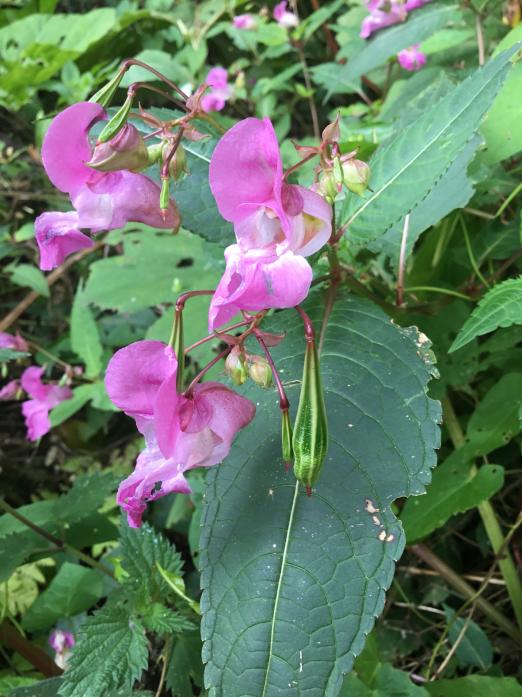
Himalayan or Indian Balsam Impatiens glandulifer Touch-me-not
THIS is a statuesque and attractive plant, introduced from India around 1839 by Victorian collectors who were looking for new and exciting garden plants.
It soon escaped from gardens to colonise damp places and riverbanks. A map of its distribution in County Durham shows it to be profuse along the lower and middle reaches of the rivers Tees, Wear, Derwent and Gaunless. Due to its violently explosive fruits it can colonise upstream as well as being carried downstream.
Charles Baron Clarke wrote in 1900: “When I was at Durham eight years ago, there was a grove of this close to the Prebend’s Bridge, high enough to bury the cows.”
Although plants may stay quite small on stony ground, in moist places they are generally about five feet high, or even more. The soft stem is hollow with red ribbing, and the lanceolate leaves are about ten inches long. Where the leaves join the stem are glands which produce a sweet nectar.
The flowers are large, in groups of five to ten, about two to three inches across and are found in various shades of pink, and, rarely, in white.
For obvious reasons, they are known locally as policeman’s helmets, and also as poor man’s orchids.
The lower sepal is very broad and serves as a landing platform for pollinating bumble bees. The bees’ further antics while pollinating have given rise to the nickname of “beesbums”.
The explosive fruits, much adored by children, are produced in late summer and are composed of a five-valved fleshy capsule which becomes very turgid. When they are fully ripe, it needs only a touch to set the valves rolling inwardly, violently scattering the seeds as far as 12 yards away.
Himalayan balsam is highly regarded by bee keepers for its copious nectar in late summer, and by gardeners for the colourful flowers.
But many environmentalists dislike this invasive incomer, and wage war to eliminate it. However, unlike the persistent Japanese knotweed, balsam is easily removed and destroyed.
The pods are edible and the seeds have a nutty taste. So give them a try any time you fancy a different sort of “snap, crackle and pop”.
Dr Richard Warren is a botanist from Barnard Castle





